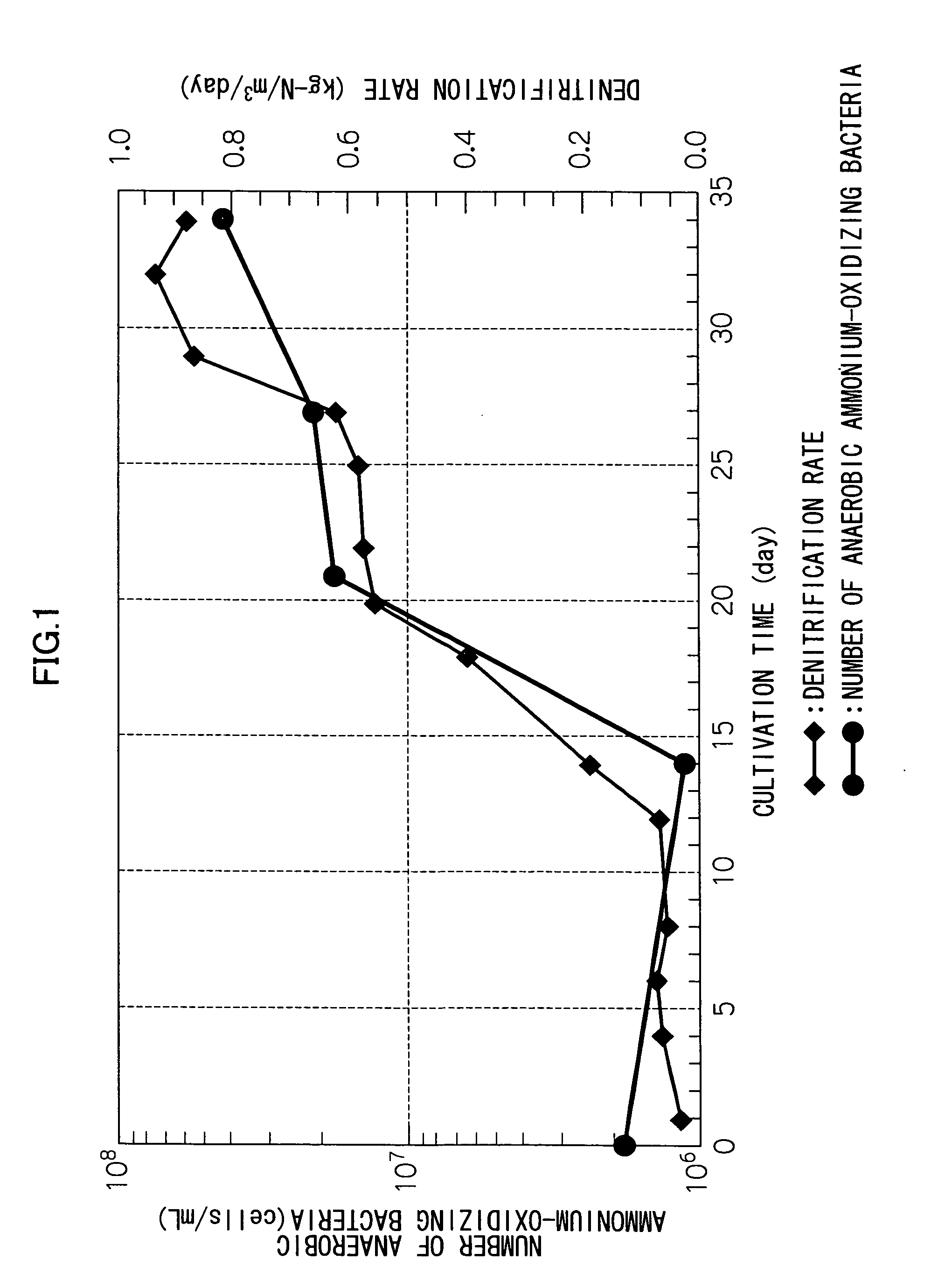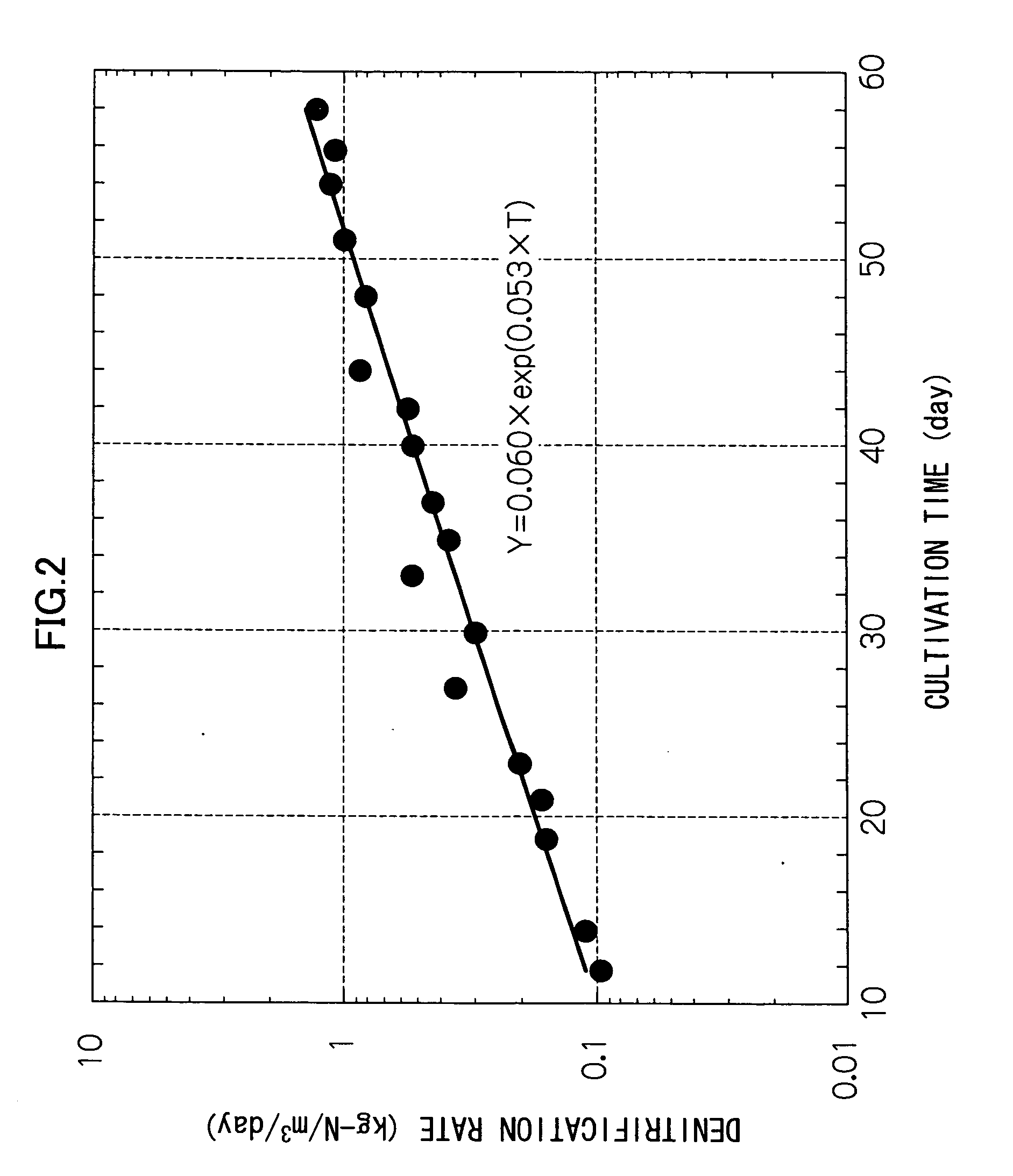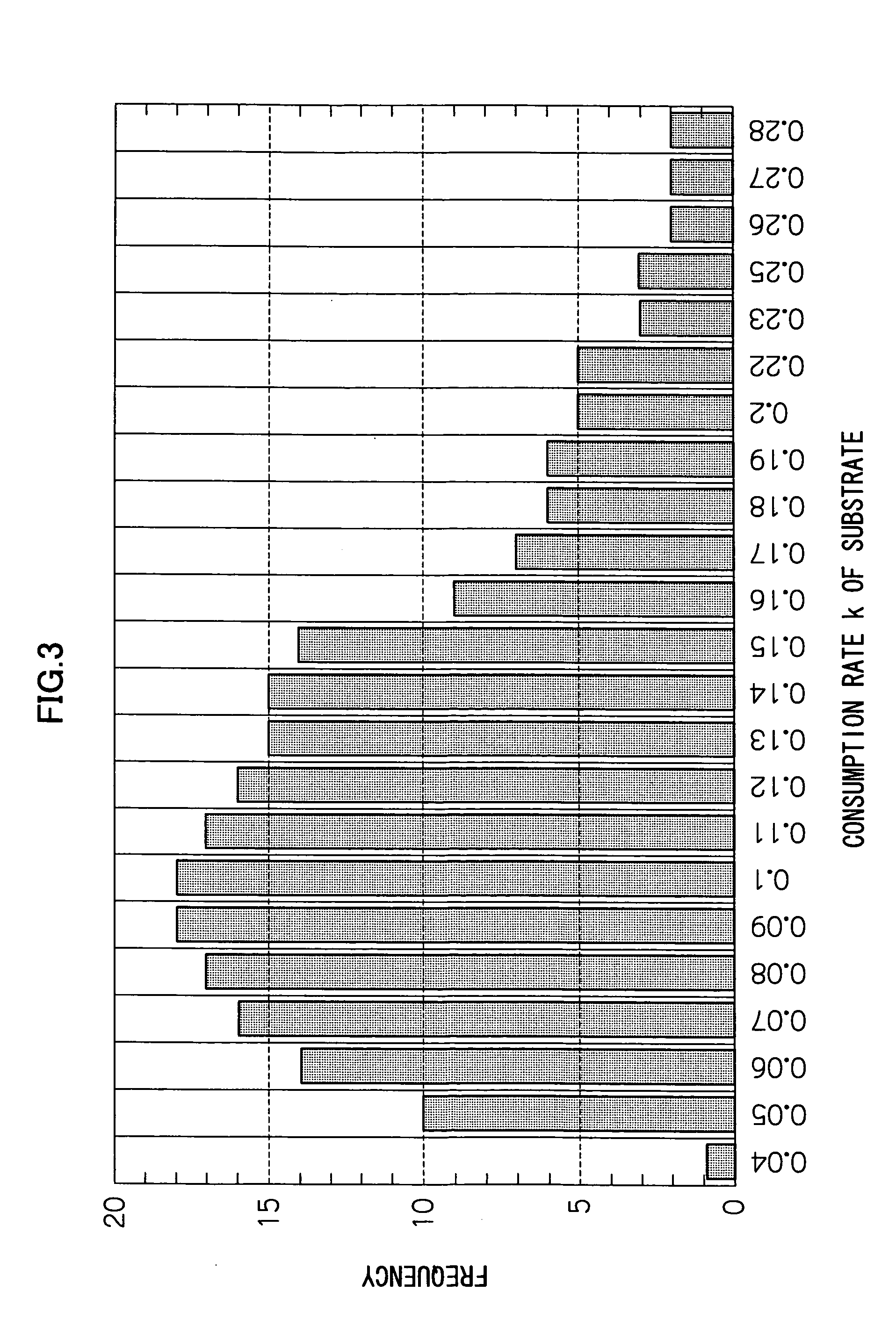Method and equipment for cultivating anaerobic ammonium-oxidizing bacteria
- Summary
- Abstract
- Description
- Claims
- Application Information
AI Technical Summary
Benefits of technology
Problems solved by technology
Method used
Image
Examples
Embodiment Construction
[0058] Hereinafter, the preferred embodiments of a method and equipment for cultivating anaerobic ammonium-oxidizing bacteria according to the present invention will be described in detail with reference to the accompanying drawings.
[0059] The present inventors have found as described below in accomplishing the present invention.
[0060] (1) When anaerobic ammonium-oxidizing bacteria having a DNA sequence of 16S rRNA gene whose particular region contains at least one of the above-described sequences (1) to (9) were examined for a doubling time, the doubling time was not 11 days, which had previously been reported, but was 1.8 days at most. The cultivation of the anaerobic ammonium-oxidizing bacteria having such a doubling time requires a cultivating method based on a technique appropriate thereto. Hereinafter, the anaerobic ammonium-oxidizing bacteria that contain at least one of the above-described sequences (1) to (9) are referred to as “novel anaerobic ammonium-oxidizing bacteria...
PUM
 Login to View More
Login to View More Abstract
Description
Claims
Application Information
 Login to View More
Login to View More - R&D
- Intellectual Property
- Life Sciences
- Materials
- Tech Scout
- Unparalleled Data Quality
- Higher Quality Content
- 60% Fewer Hallucinations
Browse by: Latest US Patents, China's latest patents, Technical Efficacy Thesaurus, Application Domain, Technology Topic, Popular Technical Reports.
© 2025 PatSnap. All rights reserved.Legal|Privacy policy|Modern Slavery Act Transparency Statement|Sitemap|About US| Contact US: help@patsnap.com



